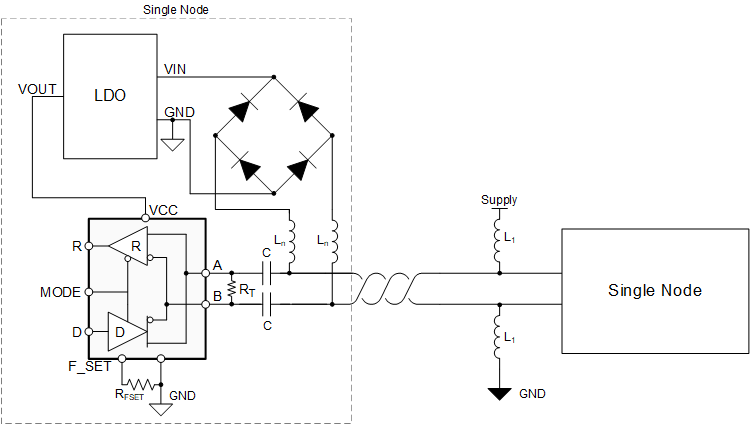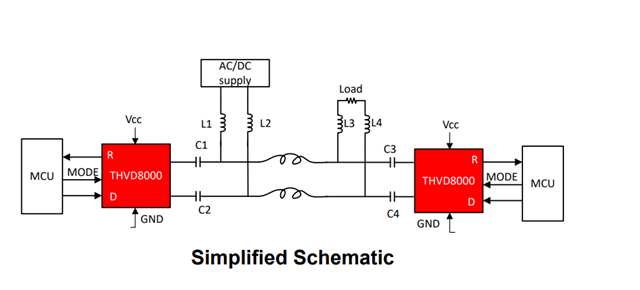Tool/software:
Hi There.
I am searching for the solution for RS485 with power delivery.
More specifically, I need to use 3 -wires to carry the data and power at the same time.
I found THVD8000 could carry RS485 on power, but when I see more deeper and someting confused me.
Is that measns if I use RS485 communication on A,B, the power could not delivery and needs another nodes for self-power providing?
Otherwise, if use OOK modulation and the power(might 3V or 5V) could carry on these A,B wire?
Please help me to clarify or any suggestions are welcome.



